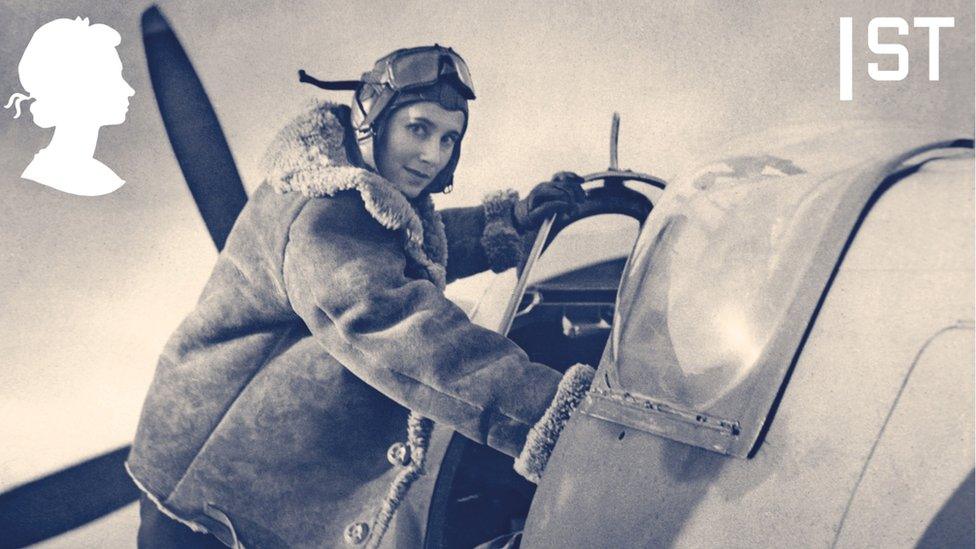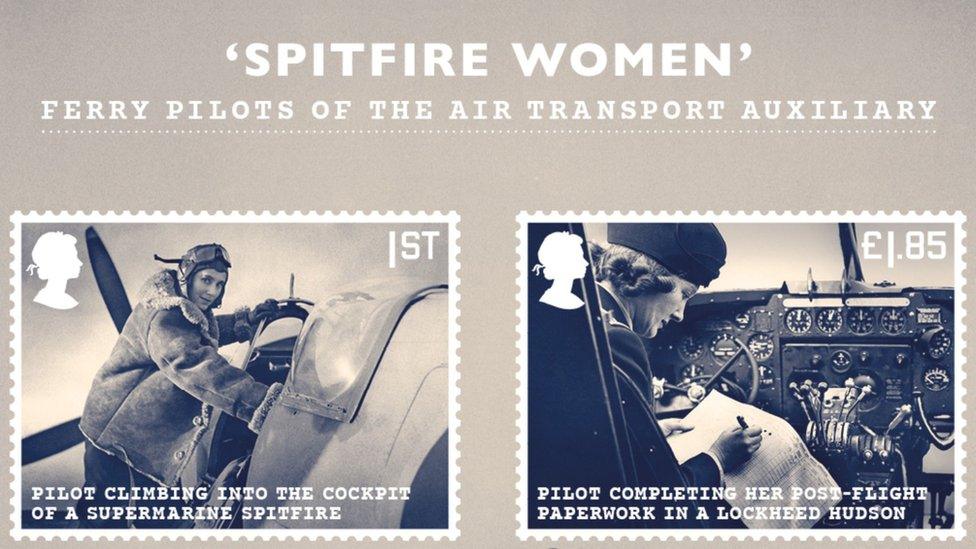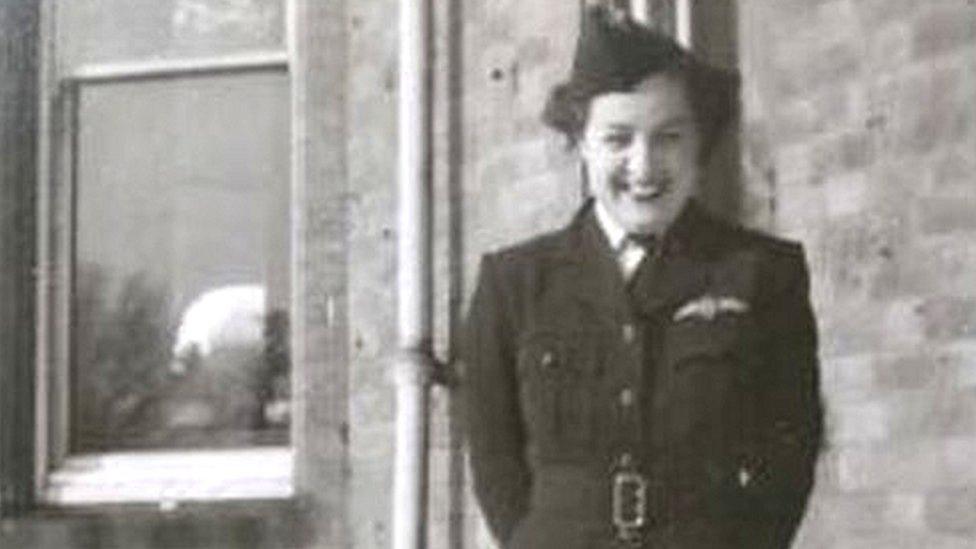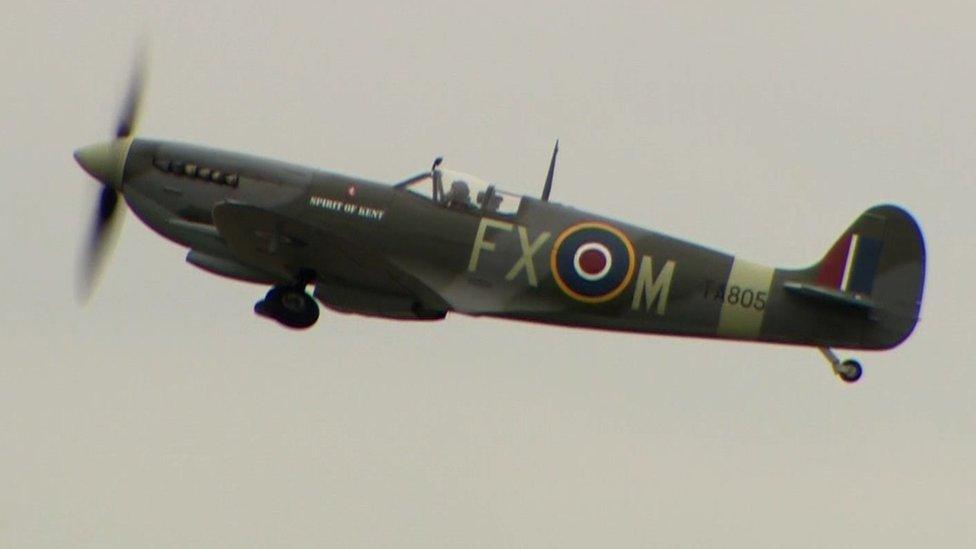Royal Mail releases stamps to honour the Spitfire Women
- Published

Until 1941, women's work in the war was voluntary
A new set of stamps are to be released to recognise the work of the Spitfire Women during the Second World War.
The Royal Mail stamps, which will be available from Thursday, will include one of Mary Ellis from Oxford.
She was part of the Air Transport Auxiliary which delivered Spitfires and bombers to the front line.
Four stamps in a miniature sheet will showcase the brave work of the women who helped deliver 309,000 aircrafts.
Alongside that, there will be 10 different stamps produced to illustrate the huge range of jobs that women did during the war.
The roles were wide and varied, ranging from repairing army vehicles to cracking secret codes.

Two of the stamps to honour the Ferry pilots
Initially, roles in the Auxiliary Territorial Service which Mary Ellis was part of, were limited to cooks, cleaners, orderlies, store-women, and drivers.
However as the war went on these roles were massively expanded to include other duties, notably work on the anti-aircraft sites and ferry pilots, deliver Spitfires to the frontlines.
David Gold, a director at Royal Mail, said: "These stamps are a tribute to the millions of women who contributed to the war effort and the Allied victory.
"Their bravery and sacrifice is often overlooked, but their work helped to drive some of the post-war social changes that eventually saw equal opportunities and equal pay legislation.
"We must also remember the women who supported the war effort at home, managing households despite the unceasing demands of total war."

The Supermarine Spitfire
The Spitfire was designed by Reginald Mitchell at the Supermarine factory in Woolston, Southampton
The prototype was first flown from Eastleigh Aerodrome, now Southampton Airport, on 6 March 1936
After Mitchell died in 1937, his successor Joe Smith developed the fighter to make it faster and more powerful
The aircraft entered service in 1938 with the RAF, which initially ordered 310 of them from the Woolston works
The site was bombed in 1940 at a time when much Spitfire manufacturing was being switched to 'shadow factory' production line at Castle Bromwich, near Birmingham
Spitfires shot down a total of 529 enemy aircraft, for a loss of 230 of their own.

Follow BBC South on Facebook, external, Twitter, external, or Instagram, external. Send your story ideas to south.newsonline@bbc.co.uk, external.
Related topics
- Published10 January 2021

- Published1 April 2018
